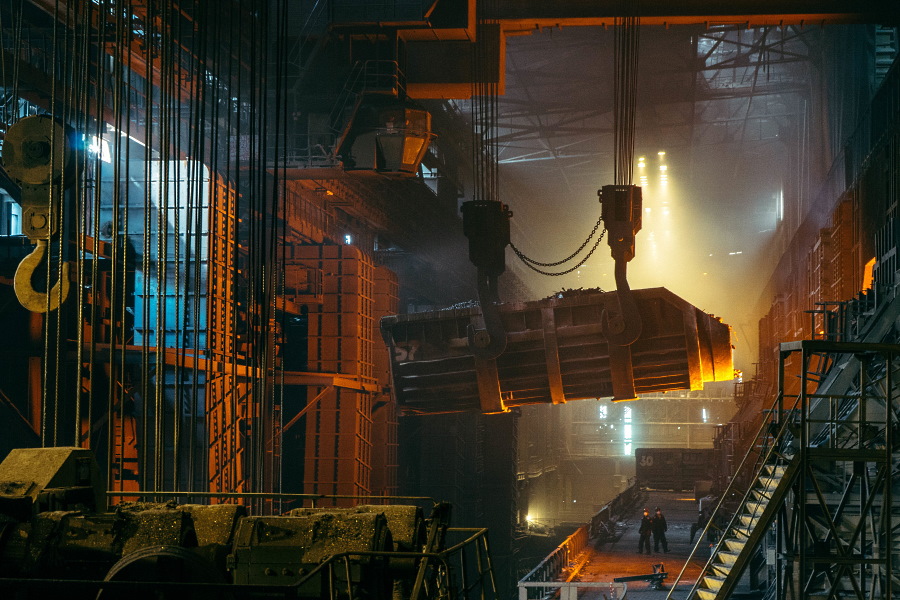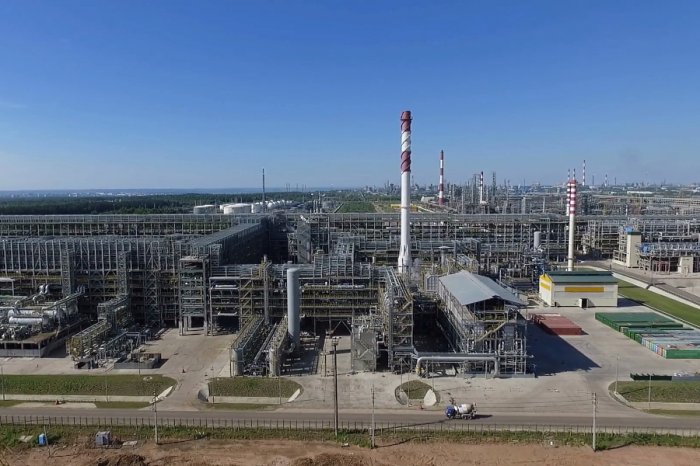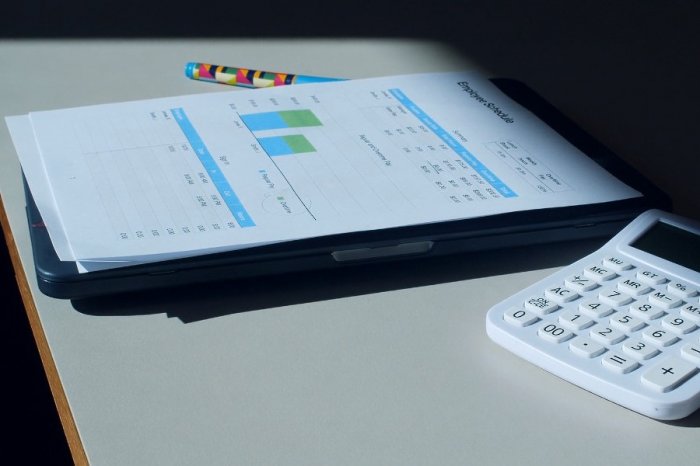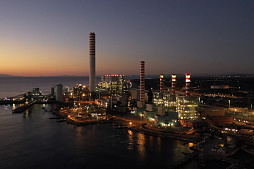Monitoring systems for industrial plants: loans and financing
ESFC Investment Group offers:
• Investment financing from €50 million and more
• Minimizing the contribution of the project promoter
• Investment loan term up to 20 years
• Loan guarantees
Industrial facilities are characterized by huge area, high complexity of technological processes and the constant need to protect expensive equipment inside them.
This is one of the main reasons why companies are actively seeking funding and loans to install monitoring systems for industry.
The trend that is currently having the greatest impact on interest in monitoring in an industrial context is its use in an ever-wider range of applications for various tasks. Key benefits of using remote sensors, cameras and other monitoring equipment in industrial plants include ensuring the safety of workers and machines, improving the efficiency of production and quality control.
An advanced monitoring system has become one of the most important business tools today, guaranteeing the highest comfort and work efficiency.
However, this sophisticated equipment is very expensive, requiring significant costs, including at the stage of operation and maintenance. Installation of industrial monitoring systems often requires many millions of euros, and some investment projects are estimated at tens of millions.
ESFC Investment Group offers financing for monitoring systems for plants, factories and other industrial facilities.
Our services cover a wide range of financial, engineering / consulting solutions for industrial facilities in the EU, Latin America, the Middle East and other parts of the world.
Technical basics of industrial monitoring systems
Manufacturing industries such as the automotive industry, electronics, semiconductor manufacturing, biotechnology, textile manufacturing and other industries are built around carefully organized processes that require constant adjustment and control.Industrial equipment can overheat or fail, and human error can lead to accidents that increase costs.
Advanced industrial monitoring systems help businesses stay on top of productivity and competitiveness, which requires investment.
Just a couple of decades ago, most industrial plants were equipped with only analog devices. These types of systems have numerous limitations, have very little ability to detect unwanted events in production chains, and often break down.
Analog video systems also do not allow for intelligent image analysis, make it difficult to search for records in archives and take a lot of labor.
Industry 4.0 as a driver for future investments
Today, all large industrial plants are replacing analog monitoring systems with smart solutions.They allow technical teams to move from traditional reactive monitoring, which only allows them to document and explain failures, to real active work. These systems not only provide a real-time view of the situation, but also often automate processes that allow preventive action to be taken.
Integrated monitoring solutions significantly increase the level of safety of industrial facilities, informing the control center and the security service. Thus, this equipment is able to check and evaluate potential threats from anywhere in real time.
The obvious benefit of automated technical solutions is savings on personnel, reaching 70-80% or even more.
The automation of plants, factories, power plants, warehouses and logistics hubs is moving in line with the global trend towards Industry 4.0 as these solutions support productivity and safety. First, industrial monitoring affects efficiency, helping to save money and secure valuable raw materials and goods. This reduces the financial risks associated with theft or additional insurance costs, as well as the risks associated with production downtime.
Thanks to analytics and automation, efficient control of the production line is established, which significantly reduces the cost of quality control.
Monitoring of production processes allows you to solve problems remotely and support employees in the maintenance and proper management of high-tech equipment. For example, computer vision applications check product code, pressure, temperature and detect problems during production and take action before losses occur. Such monitoring makes it possible to remotely monitor the critical temperature both at short and long distances.
A number of key applications in manufacturing, warehousing, distribution and logistics require accurate real-time dynamic tracking of various types of hand and portable tools, forklifts, vehicles, mobile measuring equipment, robots and more.
These requirements are growing in the context of digital transformation towards Industry 4.0 in smart factories, warehouses and fulfillment centers based on the Industrial Internet of Things (IIoT).
To this end, more and more businesses are relying on state-of-the-art RTLS (Real-Time Location Systems) digital platforms to locate and track equipment on site based on GPS, RFID, Bluetooth, WLAN or other appropriate technologies.
The three main tasks of real-time tracking are:
1. Digitization and automation of the process in order to facilitate its centralized and remote management and electronic documentation.
2. Achieving transparency of production and auxiliary processes.
3. Saving time and effort that employees of enterprises usually spend searching for materials and products.
Although some traditional localization solutions, such as the global positioning satellite system (GPS), face serious limitations when operating inside industrial facilities, new technologies are being developed to enable accurate, automatic indoor tracking.
The location of the employee, tool, vehicle, or even mobile robot can be pinpointed to the inch.
Automated industrial monitoring systems do not exclude the presence of a person, but optimize his work. In factories with an increased risk of accidents, where wearing a helmet is mandatory, smart cameras, enhanced by modern software, can immediately check whether a person inside the plant is wearing appropriate protection.
The network loudspeaker automatically informs the employee about the need to wear a protective helmet, and the system operator receives a notification.
Obviously, it would be very difficult to control this task by employees in a non-automated way.
For industrial monitoring to be effective, it must be tailored to the needs of the company, cost-effective and versatile. It is essential that such a system be scalable and flexible and work in conjunction with other systems, including security and industrial building management systems. Such projects require customized solutions, advanced technologies and significant investments.

Digital transformation requires investment in security
The success of modern industrial enterprises largely depends on the level of their automation and the effectiveness of computer control and management systems at different levels.Uninterrupted industrial monitoring and reliable information security of computer control systems are the focus of almost all sectors.
The problem of protecting industrial facilities has increased significantly after a series of incidents involving specially created malicious computer viruses. In some cases, competing companies and cyber-terrorists use the lack of security of industrial systems and their components to disrupt critical industrial processes.
This requires additional investment in security, especially for high-tech and potentially hazardous industrial enterprises.
The main trends in the development of modern intrusion / anomaly detection methods for computer systems include an increase in the reliability and accuracy of detection, which can be solved on the basis of continuous monitoring and the use of artificial intelligence to diagnose the state of an object as part of a single complex industrial system.
The disadvantage of modern industrial monitoring systems when servicing complex technical enterprises is the inability to determine the initial stage of a malfunction.
Solving diagnostic problems allows not only to compare basic parameters with their reference values, but also to predict the risk of anomalies on the scale of the entire production system. A promising direction in the process of creating such systems is the use of wireless sensor networks, which combine the advantages of traditional centralized control systems and intelligent tools.
Loans for industrial monitoring systems
A long-term loan is the most common form of financing for companies planning to purchase, install or upgrade industrial monitoring systems.It is a cheap and fast financing, as well as an interesting alternative to leasing, widely used by companies from various industries, energy sector, mining and other fields.
This is a targeted loan for the purchase of equipment, provided by a commercial bank or other financial institution on a long-term basis. Such a loan is usually secured by a promissory note, or certain assets of the company may serve as collateral.
Like any other funds for business development, a loan for monitoring systems is a kind of investment project for the bank. The bank invests money in an industrial enterprise in order to receive a part of its profit on the terms specified in the loan agreement. At the same time, acting as an investor, the bank assumes part of the risks. Such loans are issued only if there is a convincing investment program developed and presented by the borrowing company.
It is reasonable to assume that banks are interested in investing in such technical solutions that have the greatest positive impact on the efficiency of a particular business. It really depends on the sector. For example, in agribusiness, it is advisable to invest in the purchase of agricultural machinery, the use of which reduces the cost of production.
For industrial enterprises, mines, quarries, power plants and logistics hubs, advanced systems for monitoring and controlling key technological processes are critical to competitiveness, so such investments are in high demand.
A loan for monitoring equipment should solve the following business problems:
• Optimization of key technological chains.
• Improving the efficiency of production processes.
• Prevention of theft of equipment and goods.
• Improving worker safety and reducing insurance claims.
• Reducing labor and other costs.
Also, credit instruments can be used for refinancing purposes if an industrial enterprise has previously taken out loans for the purchase, installation or modernization of equipment.
The list of investment lending goals can be much wider, but the main thing for the borrower is to demonstrate to the bank that he will not only return the money invested in the enterprise, but also make a profit.
Since the procurement of monitoring systems is often carried out for already existing facilities with a certain operating history, the financial performance of the enterprise over the past years can instill confidence in the capital provider of success. This is important to achieve adequate financing terms.
For new facilities, financing of industrial monitoring systems may be part of a large loan agreement or come as a separate agreement, for example, with a manufacturer or importer of specific systems. Also in this scheme, an engineering company involved in the development of the project and the search for specific solutions can play a leading organizational role.
Since modern equipment for control and monitoring at large and heavily loaded plants pays off quickly, we are usually talking about loans for a period of 2 to 5 years, rarely more.
To simplify the decision-making process, banks develop standard requirements for the borrower. An industrial enterprise applying for a loan must not have overdue debts to other banks or tax debts. Such an enterprise should not be in bankruptcy or liquidation or have other serious problems that make any further financing risky.
Secondly, financial institutions are very carefully studying the investment program of a potential borrower and a specific business plan.
How the investment documentation will be prepared directly affects not only the decision of the bank to issue a loan, but also the terms that the bank will be ready to provide for a particular project.
Financial indicators and the amount of collateral are especially important. The larger and more reliable the enterprise, the easier it is to reach the desired agreement with the bank.
When drawing up a business plan, you should not underestimate the risks. A complete and high-quality description of the weaknesses of the project and external threats will look much more reliable and can become an additional advantage in the eyes of the capital provider.
Our financial team helps clients to carefully analyze each investment project when looking for financing, so you can shift part of the workload onto the shoulders of professionals.

Leasing schemes for financing industrial monitoring equipment
Leasing industrial monitoring equipment is an important solution for businesses that are short on cash as it allows them to optimize their expenditures.Under this mechanism, ownership remains with the financial institution or leasing company while the business actually uses the leased asset.
Given the high pace of technology development, wear and tear of equipment and the need to modernize monitoring systems, leasing has become an attractive option for industrial companies.
The advantages of leasing over lending are as follows:
1. The lessee company is able to lease equipment for the purpose of implementing an investment project without the prior accumulation of significant funds or the use of additional external sources.
2. Leasing may be the only possible way to finance investment projects that are implemented by enterprises that do not have a credit history and the necessary assets to provide collateral, as well as companies that are in a difficult financial situation.
3. Leasing payments are flexible, since the terms of payment for equipment are usually set taking into account the real capabilities of a particular lessee.
Leasing implies financing in the full amount of the lease of property and does not require immediate payment, which makes it possible to update the main production assets with a temporary lack of resources.
It is easier for an enterprise to obtain expensive monitoring equipment through financial leasing than to obtain a loan for its purchase.
In addition, the potential loss associated with depreciation and obsolescence of equipment is reduced for the lessee, as it is depreciated with an acceleration factor. Leasing payments are included in the costs of production of the lessee, therefore, reduce taxable income.
Finally, a manufacturer of monitoring systems and other equipment leased out on a financial basis gets additional opportunities to sell their own products, so they are willing to cooperate with the leasing company. This makes leasing a mutually beneficial financial tool for the modernization of industrial facilities.
However, this tool also has negative sides. Leasing payments, being increased, can cause an increase in the price of manufactured goods, as well as reduce the competitiveness.
The lessor bears the risk of receiving payments, which means the need to obtain guarantees of the lessee's solvency.
Innovative monitoring systems for industrial applications are versatile and multifunctional. The integration of advanced technical solutions into existing production processes provides a significant increase in the efficiency of the enterprise, an increase in profits and optimization of current costs.
Our team is always ready to find the best financial solution (loan, project finance, leasing) to implement your bold investment plans.
We also help our clients with international partners to get a wide range of engineering and consulting services under one roof, accompanying large industrial projects from A to Z.
Contact us to find out more.




















